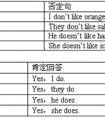用方框中所给词或词组的正确形式填空,每个词或词组只用一次be different from; help... with; take the subway; think of; get to; look after; move; have a pi-八年级英语
题文
| 用方框中所给词或词组的正确形式填空,每个词或词组只用一次 | |
2. What about in the park on Sunday? 3. Miss Gao often to work. 4. The weather in China that in America. 5. The twins were born in New York, but they in London. 6. He school at 7:30 every day. 7. —What do you the Chinese people? —They are very friendly. 8. Jim, let's the stone, it's dangerous on the road. 9. UN the United Nations. 10. She often ______ me ______ my English. |
答案
| 1. look after 2. having a picnic 3. takes the subway / took the subway 4. is different from 5. grew up 6. gets to 7. think of 8. move 9. stands for 10. helps, with |
据专家权威分析,试题“用方框中所给词或词组的正确形式填空,每个词或词组只用一次be d..”主要考查你对 一般现在时,形容词,实义动词,动名词,动词短语 等考点的理解。关于这些考点的“档案”如下:
一般现在时形容词实义动词动名词动词短语
考点名称:一般现在时
- 一般现在时:
:表示通常性、规律性、习惯性的状态或者动作(有时间规律发生的事件)的一种时间状态。 - 一般现在时的具体用法:
1. 表示经常的或习惯性的动作,常与表示频率的时间状语连用。
e.g. I leave home for school at 7:00 every morning.
2. 表示客观事实和普遍真理。
e.g. The earth moves around the sun.
3. 表示现在发生的具体动作或存在的状态
e.g. He lives in Beijing now.
4. 习惯性的爱好或行为
e.g. I like dancing while she likes singing.
5. 表示预先计划或安排好的行为。
e.g. Our class begins at 7:45.
6. 在时间状语从句和条件状语从句中,常用一般现在时代替将来时。
e.g. If you come, we will wait for you.
7. 表示格言或警句中。
e.g. Pride goes before a fall. 骄者必败。
8.表示主语具备的性格、能力、特征和状态。
e.g. I don't want so much.
Ann Wang writes good English but does not speak well.
比较:Now I put the sugar in the cup.
I am doing my homework now.
9.在时间状语从句和条件状语从句中,常用一般现在时代替将来时。
10.小说故事用一般现在时代替一般过去时。新闻报道类的内容,为了体现其“新鲜”性,也用一般现在时来表示过去发生的事情。
11.有些表示状态和感觉的动词表示现在发生的具体行为时,只用一般现在时,而不用进行时态。
注意★:此用法如果出现在宾语从句中,即使主句是过去时,从句谓语也要用一般现在时。
例:Columbus proved that the earth is round.. 第一句用一般现在时,用于操作演示或指导说明的示范性动作,表示言行的瞬间动作。再如:Now watch me,I switch on the current and stand back. 第二句中的now是进行时的标志,表示正在进行的动作的客观状况,所以后句用一般现在时。 - 一般现在时与现在进行时的区别:
一、两种时态的主要含义:
一般现在时
1.表示事物的本质特性或客观存在,没有时限性。
The table ____ soft。(feels) 表特性特征。
Japan ___ in the east of China。 (lives) 表客观事实
2.现阶段经常性、习惯性的行为,可带频率时间。
The shop closes at 7:30 p.m.
Father doesn’t smoke. (习惯)
3.表说话时的状态,感觉或结果,一般用状态动词,如:
It doesn’t matter. Does it hurt? (感觉结果)
4.特殊用法:
-在条件、时间、让步从句中用现在时代替将来。
-If you go there,I’ll help you.
—用在begin,come,go,leave,return,open,close 等短暂谓语动词表规定计划。
The plane takes off at 11:30. (不受主观支配的计划)
-在剧本、解说、标题或there(here)开头的句中表进行
There goes the bell/Here comes Mr.Wang.
I declare the meeting opens.(正在宣布)
He meets the ball and hits back to No.2 (正在发生)
现在进行时
1.说话时正在发生,进行的动作
Look! Dark clouds are gathering . (正在发生)
2.表现阶段正在进行,但此刻不一定正在进行的事。
He usually gets up at 6:00,but this week he is getting up at 7:00.
(现阶段正在进行,但说话时不一定在起床)
3.现在进行时的特殊意义
-表示主观打算常用于 go,come,leave,start,begin 等,位移、趋向动词。
How long are you staying here (准备停留)
-表示眼前刚过去的语意即“话音刚落”,适用于tell,say,talk,discuss
You don’t believe it You know I’m telling the truth.
-表示安慰、关心、喜欢、讨厌等感情色彩。
He is always making noises in class. (讨厌)
-在条件、时间、让步状语从句中表示将来正在进行。
- 最新内容
- 相关内容
- 网友推荐
- 图文推荐
上一篇:动词填空1. He ________(wash) the dishes in the kitchen when I saw him yesterday evening.2. Some old people are happy _________(be)with the young ones.3. Tom-八年级英语
下一篇:Hong Kong _____to be a good place for eating today.[ ]A. knowsB. knewC. is known D. was know-九年级英语
零零教育社区:论坛热帖子
| [家长教育] 孩子为什么会和父母感情疏离? (2019-07-14) |
| [教师分享] 给远方姐姐的一封信 (2018-11-07) |
| [教师分享] 伸缩门 (2018-11-07) |
| [教师分享] 回家乡 (2018-11-07) |
| [教师分享] 是风味也是人间 (2018-11-07) |
| [教师分享] 一句格言的启示 (2018-11-07) |
| [教师分享] 无规矩不成方圆 (2018-11-07) |
| [教师分享] 第十届全国教育名家论坛有感(二) (2018-11-07) |
| [教师分享] 贪玩的小狗 (2018-11-07) |
| [教师分享] 未命名文章 (2018-11-07) |

![Ann often _____ lunch at home with her parents.[ ]A. have B. has C. eat D. eating -七年级英语](http://www.00-edu.com/d/file/ks/4/2/yibanxianzaishi/2020-01-10/small40b2a268356d07504139412744797e7b1578586290.png)
![My father likes ____ TV. He ____ TV every evening.[ ]A. watching; watch B. watching; watches C. watch;watches D. watches; watches-七年级英语](http://www.00-edu.com/d/file/ks/4/2/yibanxianzaishi/2020-01-10/smallb871825333b9f0e6d8ca6aba8501c7f81578587670.png)

![He said that light ______ much faster than sound. [ ]A. has travelled B. went C. travels D. travelled -九年级英语](http://www.00-edu.com/d/file/ks/4/2/yibanxianzaishi/2020-01-10/small07e3495a5ee28f5eb90f50677ab131651578586475.png)
![She is going to be a reporter when she ______ up .[ ]A. growsB. will grow C. is going to growD. grew-九年级英语](http://www.00-edu.com/d/file/ks/4/2/yibanxianzaishi/2020-01-10/small9e6c519462fad76a8cc7760999a95af51578588233.gif)
